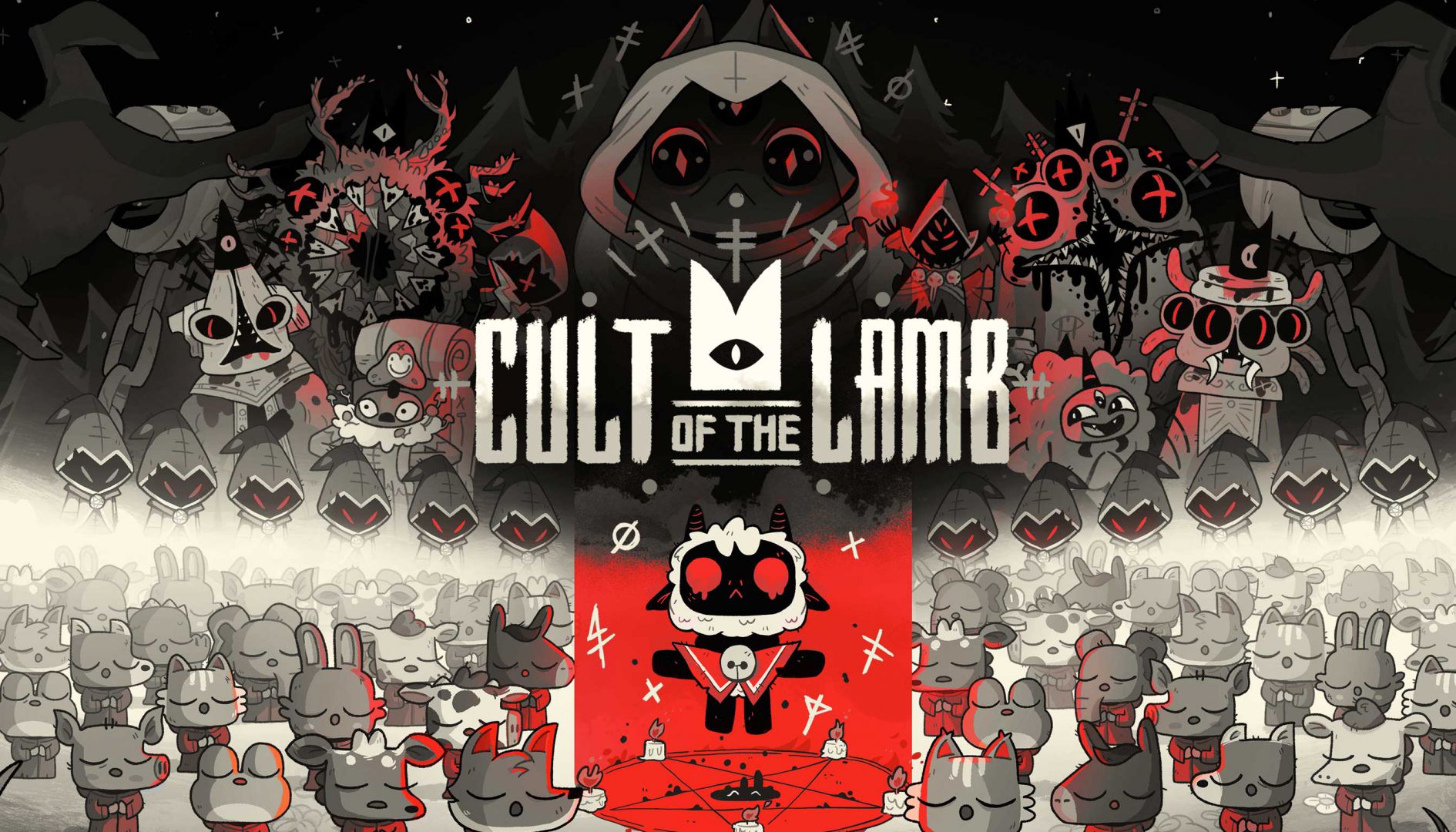Cult of the Lamb
Developer: Massive Monster
Publisher: Devolver Digital
Platform: PlayStation 4, PlayStation 5, Switch, Xbox One, Xbox Series X, Windows (Reviewed)
Release Date: 11 August 2022
Price: $24.99 USD/$35.95 AUD – Available Here
Video Review
Overview
Cult of the Lamb is a rogue-lite/management sim hybrid. After being saved from death, players are tasked as the new prophet of an imprisoned being. A second chance at life comes at a cost though, as players will need to build a cult to worship the being and slash their way through the four bosses keeping the being in chains.
Story
Rogue-lites have a pretty low bar for storytelling, and Cult of the Lamb isn’t raising the bar to new heights. Instead, it simply meets the standards for the genre with its occasional dialogue that slowly hammers out the story over many deaths. The writing is decent, but everything feels more like flavour than actual content to chew on.
Gameplay
Cult of the Lamb is a rogue-lite featuring a gameplay loop of runs through a series of randomly generated rooms followed by a period of cult management. Each run gives the player a randomly selected weapon and a magical spell referred to as a curse. As players proceed through the levels, they’ll acquire buffs in the form of tarot cards. If the player dies and prematurely ends the run, they will be penalized with the loss of some of the items collected in the run and their follower’s faith will waver. The punishment system is very well balanced. There’s enough sting to encourage players to use the escape feature as necessary, but the pain isn’t so severe that it’ll create a snowball effect that is difficult to break out of.
Combat is simple, but tightly executed. There are no complicated attack combinations to speak of, the game consists simply of physical attacks, limited magical curses, and dodge rolls. The dodge mechanic feels pretty good. Attacks are clearly telegraphed with a wind-up animation and a flashing white animation. My only issue with the system is that there are a lot of flashing on the screen by default and enemies can be a little small, so spotting an enemy ready to strike can be a little difficult in the chaos. I would love to see an accessibility option added to the game that lets players customize the flashing colour so it can be more easily seen.

There is a satisfying variety of weapons and curses for players to master, with more being unlocked as the game progresses. I like that the game forces players to master all the available weapons instead of encouraging them to pick a favoured weapon style and run with it all the time. Considering the combat is so simple, it keeps each run fresh and adds another factor into the equation when players decide if they should bail out of a run early.
The management sim surprised me the most with its depth. Initially, it felt lightweight, and I fully expected the worst. As I progressed, I realized the game has plenty of opportunities for players willing to plan out their doctrine choices and ritual use for the long term to maximize productivity and resource generation. The developers did a great job hitting the Goldilocks zone where there is just enough complexity to be captivating without overshadowing the rogue-lite portion of the game.

The game does an excellent job leaning hard into the cult theme. Fans of cult documentaries will recognize plenty of tongue in cheek references to stereotypical cult behaviour woven into the game’s mechanics. The doctrine choices are a decent mix of benevolent, evil, and ambiguous behaviour. It’s nice that the developers have opted to have some ambiguity, instead of going for the poles for every choice.
The game is accessible to all skill levels. Due to its rogue-lite nature, many skill gaps can be overcome with some extra grinding to arm players with extra bonuses. For the bigger skill gaps, there are four difficult settings that can be changed at any time. Furthermore, the mechanics are balanced enough that choosing the wrong doctrine or dying several times in a row isn’t going to dig the player into a hole they can’t get themselves out of.

The controls are solid. They are tight and responsive. The game is designed for a controller, and I’m not the biggest fan of the default layout. The attack is bound to X on an Xbox controller, and dodge is bound to B. A is used as the interact key but is easier to hit for due to its closer proximity. There is an alternate layout that binds dodge to A, but it does cause some issues where some things use X as the use key and other things using A compared to the default layout where everything is bound to A.
Visuals
The visuals are excellent. Its cute art style contrasts nicely against the violent nature of the game and the cult theme. The enemy design is eye catching, and the animations are solid.

Audio
The audio experience is enjoyable. The sound effects are great. The soundtrack is a pleasant accompaniment to the game as it hits all the right emotional notes without being distracting. My only complaint is I wish there was a different song that is more mellow for previously cleared rooms.
Overall
Cult of the Lamb is a stunning example of a game that eschews complexity in favour of doing the simple things well. The entire game is tightly executed with a surprising amount of depth considering its simplicity. While there are some small issues here or there holding it back from perfection, Cult of the Lamb is a must play for fans of rogue-lites and management sims.
Capsule Computers review guidelines can be found here.


